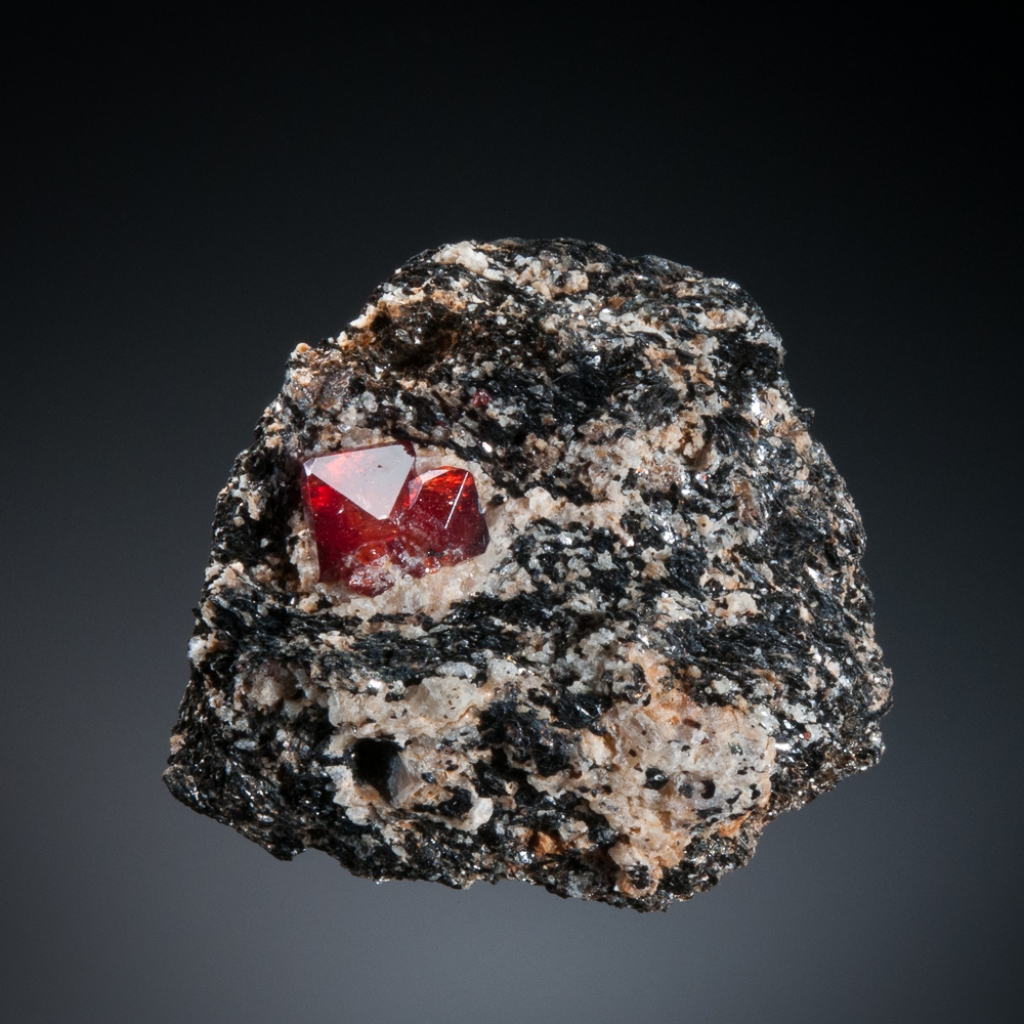Description
Detailed Description
This piece features a wonderful pair of zircon crystals – they are sharp, brilliant red and glassy, with bright internal play of light.
Underneath them, there is a small area where some zircon didn’t really develop into well-formed crystals due to interaction with the feldspar and mica when forming. Displayed not on a shelf that is actually higher than the viewer, this area is not something one sees well – it’s in shadow and what one sees is the amazing red crystals. One would display this at or below the viewer’s height anyway, to catch the best of the specimen’s internal light from above.
In excellent condition, no damage. Stands perfectly for display as photographed. Fluoresces yellow in short-wave ultraviolet light, as shown in the last photo.
The larger of these crystals is one of the most beautiful red zircon crystals I have ever seen.
If you are thinking that you recognize this specimen, it featured in my 2017 ads in both Mineralogical Record and Rocks and Minerals (it sold when it was listed and I’ve acquired it back).
Browse more Zircons from Astor Valley (click here)
Browse more Specimens from Pakistan (click here)
About these Zircon Specimens
These zircons are from a relatively large new find of zircons from Astor Valley, in Pakistan. A locality that has sporadically produced moderate amounts of material in recent years, this recent find produced a large number of pieces. However, fine zircons are proportionally very few. There are two key reasons for this. First, the zircons are enclosed within solid rock with other hard constituent minerals, such that a good number of zircons were broken when they were collected. However, the second reason is the much more prevalent issue based on the material I’ve seen: the zircon crystals seem to have formed more or less contemporaneously with most of the other minerals in the deposit – feldspar, biotite mica, and pyroxene – and as a result, most of the zircon crystals are not fully developed. Instead, most zircon crystal growth was interrupted by the growth of these other minerals, and therefore most zircons are simply incomplete, or malformed. And yet, among well over 1000 pieces I went through from this find, there were a few excellent specimens.


